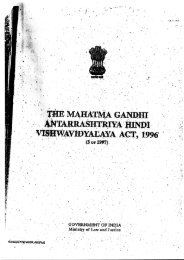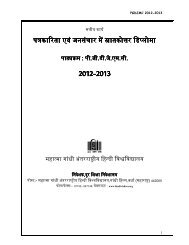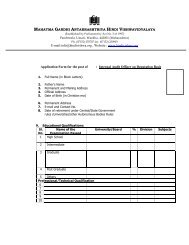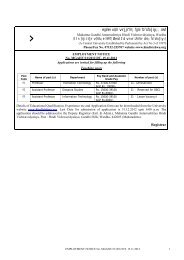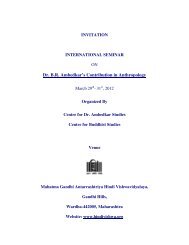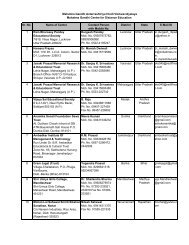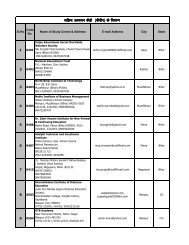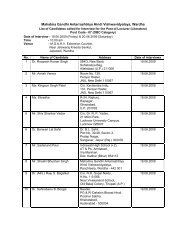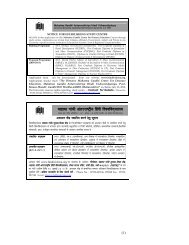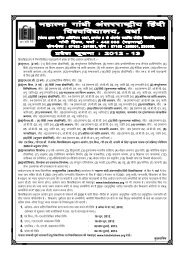Mamta Kalia
Mamta Kalia
Mamta Kalia
Create successful ePaper yourself
Turn your PDF publications into a flip-book with our unique Google optimized e-Paper software.
can it be called a regional culture,<br />
regional economy, a regional social<br />
system in the narrow sense in which<br />
many people understand regionalism at<br />
present. At the present juncture a narrow<br />
definition and outlook of regionalism are<br />
being projected forcefully from outside,<br />
asking us to look afresh at our local<br />
history from their sectarian perspective.<br />
In this narrow sense, Rahulji was not<br />
regional. He had made a deep study<br />
of regions and of regionalism which was<br />
holistic and all-encompassing in its range.<br />
He was a great scholar of Sanskrit, of<br />
classics and of traditions. For him<br />
knowledge derived from books alone was<br />
incomplete. He did not confine his study<br />
of a culture to Sanskritic and sacred<br />
texts. He believed that if a tradition<br />
is confined to books and texts only,<br />
it is a dead tradition and, therefore,<br />
it is of no value. Only when it has become<br />
a part of people’s life, it has got assimilated<br />
in their life system and has influenced<br />
their every day living and provided<br />
momentum to it, can it be said to have<br />
a permanent significance. To identify this<br />
living form of a tradition, a wanderlust<br />
is inescapable; one had to be a lifelong<br />
wanderer like Rahul. From this point<br />
of view, Rahul made as much use of<br />
his feet as that of his brain. What<br />
strenuous journeys on foot he undertook<br />
to reach the conclusion that much more<br />
than what you learn from a study of<br />
scriptures, records or books, you learn<br />
from talking to the people, interacting<br />
with them face to face and examining<br />
things directly! In this context, he<br />
34 :: April-June 2010<br />
provided a new depth to the answers<br />
to the questions that had been raised<br />
by Maithli Sharan Gupta: “What were<br />
we, what are we and what would we<br />
be now?” From this stand point, he<br />
undertook a study of India through<br />
studies of regions like Uttarakhand and<br />
reached the conclusion that<br />
Uttarakhand’s civilisatioin is not regional<br />
in the manner a cactus plant, which<br />
is found only in a particular region and<br />
derives its specific identity only from<br />
it, is.<br />
According to Rahul, the hill<br />
civilization is a unique blend of diversity<br />
and distinctiveness on the one hand and<br />
similarity and unity on the other. The<br />
uniqueness of this culture consists in<br />
its being a product of several elements,<br />
trends and influences. It is, therefore,<br />
both a regional and a multi-regional<br />
culture; while its roots are in one region<br />
which has given in its distinctiveness,<br />
its branches, by spreading out into many<br />
regions, have given it a multi-regional<br />
character as well. Rahul has said at one<br />
place that Uttarakhand culture is truly<br />
like the Himalayas which, in spite of<br />
having a specific geographical location,<br />
is representative of the entire country<br />
and delineates its contours. You will<br />
not find any literature, culture, poem,<br />
book or epic, or any language of India<br />
which does not have a link with the<br />
Himalayas. Just as the Himalayas belong<br />
to the entire India but are located in<br />
a particular part of the country, in the<br />
same way, Uttarakhand’s culture,




